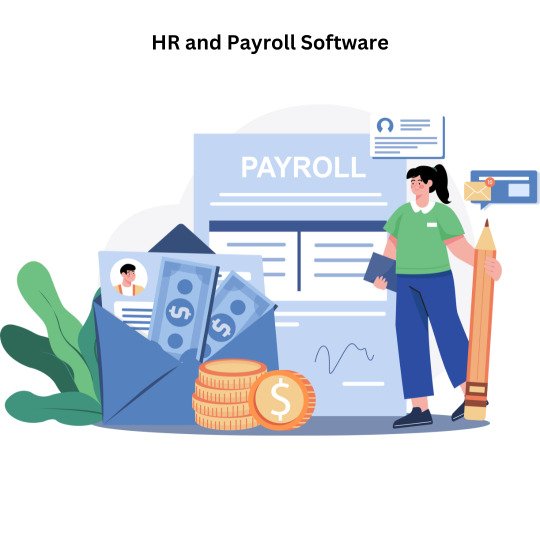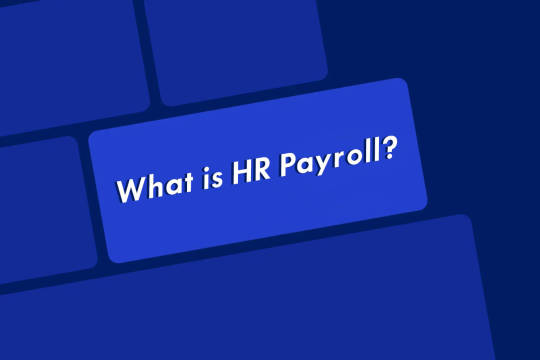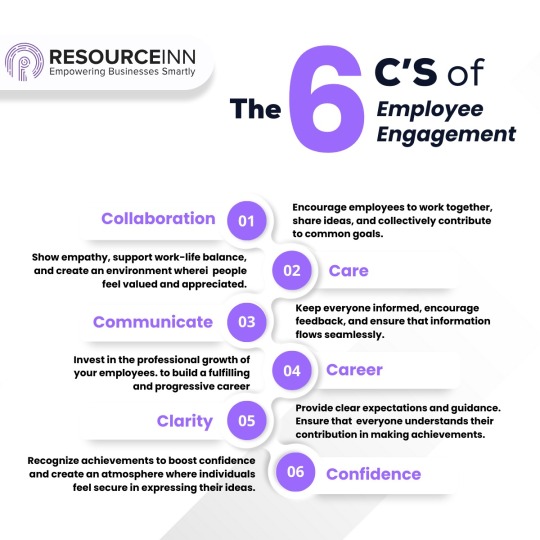#hr payroll
Explore tagged Tumblr posts
Text
Your Go-To ERP Solution Provider in Mumbai | shantitechnology | STERP
Discover the leading ERP software providers in Mumbai! ShantiTechnology offers top-notch ERP solutions tailored for manufacturing companies in Mumbai. Streamline your operations, boost productivity, and stay ahead in the competitive market.
Contact us today for the best Manufacturing ERP software in Mumbai!

#ERP for manufacturing company in Mumbai#Leading ERP Software Providers in Mumbai#ERP software providers in Mumbai#Manufacturing ERP software in Mumbai#ERP software Companies in Mumbai#ERP solution providers in Mumbai#ERP India#Business Ideas#purchase#store inventory#HR payroll#manufacturing#STERP#shantitechnology#quality control
8 notes
·
View notes
Text

Payroll's Role in Employee Satisfaction!
Employees receive their pay on time. This reliability contributes to a positive workplace culture where employees feel valued and secure.
If you have any further queries, please get in touch with us.
91-7338855062
For more info: https://www.maatromhrsolution.com/payroll-management.../
#maatrom#payroll#EmployeeSatisfaction#EmployeeEngagement
#payontime#PayrollServices#payrollmanagement#payrollconsultancy#payrolloutsourcing#chennai
0 notes
Text
Let’s Explore the Key Features of Advanced HR Payroll Software
Introduction
Managing HR and payroll processes effectively is a critical aspect of any business. Manual handling of payroll tasks often leads to errors, non-compliance, and unnecessary time consumption, resulting in reduced operational efficiency. This is where advanced HR Payroll solutions come in, offering businesses an automated, centralized, and streamlined way to handle HR and payroll operations. With features like compliance tracking, robust reporting, and time-saving integrations, HR and Payroll Software transforms tedious administrative tasks into efficient workflows. Let’s delve into the essential features of a modern HR Payroll System and understand how it can be a game-changer for businesses.
Core Payroll Management
Automated Payroll Processing
Automatically calculate wages, taxes, bonuses, and deductions based on predefined rules.
Offer flexible pay schedules that cater to diverse employee types, such as full-time, part-time, and freelance staff.
Support direct deposit and secure electronic payments, reducing paperwork and delays.
Compliance and Regulatory Tracking
Ensure compliance with tax regulations at local, state, and federal levels through automated updates.
Simplify tax filing and reporting to prevent penalties and audits.
Maintain secure, centralized payroll records that can be accessed anytime via the HR Payroll System.
Employee Self-Service Portals
Allow employees to access pay slips, tax forms, and benefits information online.
Provide self-service options for updating personal details and tax preferences, reducing HR intervention.
Enhance transparency and employee satisfaction with user-friendly interfaces.
Comprehensive HR Management
Recruitment and Onboarding
Streamline the hiring process with a centralized applicant tracking system.
Automate onboarding workflows, reducing paperwork and saving time.
Centralize employee records for easy access and updates.
Time and Attendance Management
Use automated tools to track attendance, leaves, and working hours accurately.
Provide flexible shift management for businesses with diverse operational needs.
Integrate attendance data seamlessly with payroll & HR management tools to ensure accurate salary calculations.
Benefits Administration
Manage employee benefits like health insurance, retirement plans, and reimbursements efficiently.
Automate enrollment processes and provide employees with self-service options for benefit updates.
Simplify complex benefit structures, ensuring clarity and accessibility for employees.
Advanced Analytics and Reporting
Detailed Reporting and Insights
Generate customizable reports on payroll, compliance, and workforce performance.
Utilize real-time analytics to make informed decisions about workforce planning and budget allocation.
Access predictive analytics to identify trends and improve operational efficiency.
Integration and Automation
Ensure seamless integration with existing business tools like ERP, accounting software, and time-tracking systems.
Automate data synchronization to eliminate manual data entry and minimize errors.
Leverage APIs for custom integrations, tailoring the system to meet unique business needs.
Why Choose a Free HR Payroll System?
For small and medium-sized businesses, a Free HR Payroll System provides an affordable way to access premium features without upfront investment. With the ability to automate payroll, track attendance, and ensure compliance, even free solutions can significantly reduce manual efforts while boosting operational accuracy.
Conclusion
Advanced HR Payroll solutions offer an all-in-one approach to managing payroll and HR processes efficiently. From automated payroll calculations to compliance tracking, time management, and detailed analytics, these systems provide the tools needed to enhance productivity, ensure accuracy, and support decision-making.
Take your HR and payroll processes to the next level with Kredily’s cutting-edge HR and Payroll Software. Whether you're a growing business or an established enterprise, our feature-rich HR Payroll System is designed to meet your unique needs. Contact us today to schedule a free consultation and explore the benefits of our payroll & HR management platform.

#HR Payroll#HR and Payroll Software#HR Payroll System#HR and Payroll Management#Free HR Payroll Software#HR and Payroll
0 notes
Text
HR Payroll software system
youtube
#hr payroll#hr software#human resources management#hrm software#erp#erp software#t lab#T LAB#t lab hrm#t lab HRM#T Lab hr#hrm#accounting software#hr payroll in usa#hr software in europe#Youtube
1 note
·
View note
Text
What is HR Payroll?

There’s a lot that goes behind running an organization! There are accounts, human resources, administration, and operations to name a few! Now imagine all these data-loaded, complex procedures merging to create what we know as Payroll. If you run a budding business, by now you must have a clear idea of what payroll stands for! To simplify, it’s the intricate process of managing and monitoring employee compensation and making sure they get paid on time. So where does the term HR Payroll fit in, if these two are completely different processes? Let us explain.
Thanks to the technological advancements today, the complex processes of HR and finance can now be clubbed into one excellent software. The HR Payroll software comes with incredible problem-solving features that can not only streamline the entire process but also make monitoring and record-keeping feel like a breeze! But how does it do that? Let us walk you through the method of processing payroll through payroll outsourcing software.
How Does Payroll Processing Work?
To understand the method involved in payroll processing, here’s what you need to know.
Automation is the future, regardless of the nature of your business. When you automate a process, you are minimizing paper people errors, reducing data clutter, resolving challenges, and automatically updating your process as per the latest industry standards.
Instead of manually managing hundreds of data crammed up in hundreds of excels, how about streamlining the whole process through a cloud-based spreadsheet, readily available at your beck and call? That is how a payroll software system works. You have all your important data ready in a data silo, with features like access control and monitoring. For instance, imagine a digital portal that lets your employees view their overtime expenses with access control preventing them from changing any data. Only the admin or the dedicated resource team is allowed to make changes.
Now comes the most important part of the payroll process- outsourcing! But isn’t outsourcing a dangerous and expensive affair? Not if you shake hands with the right experts in town! Outsourcing is the process of handing over your responsibilities to a group of industry professionals for an affordable sum of money. In most cases, professional payroll outsourcing companies understand the relevance of data confidentiality and offer iron-clad security backed by professional payroll processing services.
What Are The Steps Involved In Payroll Processing?
If you’re new to payroll processing, we have good news for you! You are about to be part of a booming industry that is expected to grow tremendously in the upcoming decade. Did you know the demand for payroll outsourcing is expected to rise at a 6.1% CAGR value by the year 2033? But before you become a part of something big, you need to understand the skeletal backbone of the industry! This brings us to the next section where we discuss the steps that a payroll outsourcing organization follows to make your payroll problem disappear.StepsPurposeEmployee onboardingThanks to automated updates, new employees joining the team or old employees leaving the organization can be easily accounted for.Policy MakingGet all your policies, both new and existing aligned and incorporated under one roof without manually having to do so.Integrating Employee DataFrom overtime and leave calculations, to handling multi-tier and international employees, this software can seamlessly integrate all the data.Validating Data & InformationOnce the policies and employee data are updated in the system, verifying and validating the authenticity of the data either manually or through the software will feel like a breeze.Calculating PayrollNow with all the data authenticity verified, the payroll process can begin. The best part? Automated payroll processing doesn’t need in-house resources.Disbursing CompensationAfter the calculation is done and all errors are eliminated, the payroll system can disburse all compensation directly to the respective employee accounts.Computing TaxesUnderstanding taxes and calculating tax breakdowns is one of the toughest jobs out there. Thanks to payroll processing experts, companies can now do it easily without defaulting on their taxes.Clearing ComplianceWhen all the data is retrieved, salaries are disbursed, and taxes are cleared, your automated system will look into compliance errors or setbacks and work on them to keep your system up-to-date with the latest rules and regulations.
As you can see, a payroll software process performs end-to-end services, covering the entire platform of employee and payroll management under one big umbrella. Sounds too good to be true? Don’t worry, we are here to tell you about some limitations that you may encounter if you sign up with the wrong outsourcing crowd!
Benefits And Limitations Of Using Payroll Processing Software
AdvantagesDisadvantagesYour payroll processing will be time-efficient & automatedAutomated processes can be challenging at first without proper usability training in placeYour business can enjoy enhanced employee satisfactionYou may have to shell out some expenses on software training and usageWith an automated outsourced payroll process, you can expect overall reduced payroll costsIf you don’t sign up with the right company, you may risk data theft or privacy issuesYou can always expect your process to be at the top of compliance modificationsYour employees may not have a lot of time to adjust to the new compliance modifications
Just like two sides of a coin, it is important to understand that change can be difficult to incorporate. However, in the long run, turning to automation will be beneficial for your business. Here are what business forecasts predict about HR Payroll processing.
The Future Of HR Payroll
In today’s day and age, businesses hardly have the time to manually rectify errors, collate data, and handle multi-level operations. That’s why the world is turning towards automation where a simple process can resolve all these complex issues in one go! Additionally, a seamless process can also benefit your business in terms of productivity.
For instance, most employees today live a pay cheque to pay cheque kind of lifestyle. Delays or errors in payment processing may reduce their working morale. On the other hand, a company that’s on top of its salary disbursement schedule will always fetch happy, satisfied, and productive employees. In a nutshell, the future of HR Payroll lies in payroll process outsourcing, automated payroll software, and professional companies that excel at both of these jobs.
#Payroll#HR Payroll#payroll software#payroll process outsourcing#payroll outsourcing software#HR Payroll software#professional payroll outsourcing companies#professional payroll companies#payroll process#payroll service#payroll management
0 notes
Text

5 Reasons to break-up with Traditional Payroll
In today’s mobile age, where business is done anytime, anywhere and from any device, it is time start-ups and SMEs embrace advanced and cutting-edge technologies to stay ahead of the curve. Mobile and cloud technology has a pivotal role to play in this technological revolution.
Read More: 5 Reasons to break-up with Traditional Payroll
0 notes
Text
0 notes
Link
To become a successful professional payroll specialist, opt for HR Payroll Training in Delhi. It is advisable to get a clear understanding of their role in the organization before setting foot in this domain.
0 notes
Text
06/02/25

Nine of Pentacles
Alexa, play that ABBA song…
Or: you’re on payroll duty now, and trying not envy everyone with greener grass.
- CJ
2 notes
·
View notes
Text

Finding the Right HR Software for Your Business
#hr software#hr management software#hr management system#hr payroll software#software#services#development
4 notes
·
View notes
Text
Best Business Software Tools in 2024
The right software tools can help increase productivity, draft operations more efficiently and promote company growth in today's high-paced business environment. Whether you are a start-up or an existing enterprise the following business software is necessary to improve different areas of your business.
1. Project Management: ClickUp

It is a feature-laden project manager that lets you handle tasks, projects, and workflows of all types. Its ease of use and user-friendly interface, complimented with diverse dashboards cater to audiences between small teams and large organizations. Task assignments, time tracking, goal setting, and collaboration options allow you to stop hopping between spreadsheets and emails so your projects are complete efficiently.
2. CRM–– Zoho CRM
Zoho CRM — Your Intelligent Customer Relationships Management System. Among other features, it has lead management, sales automation, and analytics to make sales performance improve on a consistent streamline both administrative aspect as well as customer satisfaction. Due to its integration capabilities with other Zoho products, as well as most third-party applications, It has become a flexible option for businesses that are ready to supercharge their customer relationship management.
3. Accounting: Zoho Books

Zoho Books- The Best Accounting Software for Business Owners Invoicing, expense tracking and financial reporting are some of its features. You can also rest assured that your taxes are being handled correctly and always have the latest view of your financial health to help you manage your finances better.
4. HR Management: monday. com HR
It is a complete human resources management software that helps companies to better structure their workforce. This system provides with facilities like employee on boarding, performance tracking, payroll management etc. With the platform's ease of use, UI simplicity, and automation capabilities in HR processes that would otherwise take hours away from key HR initiatives.
5. Payroll: OnPay

OnPay is an excellent payroll software for businesses of all sizes. It is a cloud payroll software for businesses that ensures complete compliance and automation of top-class payroll calculations, tax filings & employee payments. Additionally, OnPay provides HR and benefits management tools, effectively providing a full-fledged employee pay management solution.
6. Point-of-Sale (POS): eHopper
Versatile Point of Sale Software for Businesses Up To Mid-Sized It offers services like Inventory management, sales tracking and customer management. This makes eHopper a perfect choice for businesses that intend to simplify their sales operations using an affordable and intuitive POS system.
7. Inventory Management: Cin7

While there are plenty of other inventory management systems available, Cin7 stands out as one of the most popular options for small to mid-size businesses (SMBs) looking to get their stock levels, orders and supply chain operations under control. These functionalities consist of real-time inventory monitoring, order processing and e-commerce platform integration. With the powerful feature set of Cin7, businesses can keep inventory at an optimal level and fulfill customer demands to the hilt.
8. Website Builder: Weebly
Weebly is the website builder that you can also use to build your site or blog. It has lots of customizable templates, drag-and-drop functionality, and e-commerce ready to go. With Weebly, you can create a professional website even if you are a tech noob and give your business the relevant online visibility it needs.
9. Recruiting: ZipRecruiter

ZipRecruiter: Popular rated job search app for businesses on board. They provide hiring solutions through features like job posting candidates filtering and tracking the application. AI-powered matching from ZipRecruiter surfaces more relevant candidates to businesses faster.
10. VPN: NordVPN
It is a secure, encrypted VPN application that will make sure that you and your business stay safe as you work with the web. It provides features of encrypted connections, threat protection and global server access as well. In this way, It guarantees secure data in companies and privacy on internet.
Conclusion
The business software tools a company uses are very important to increase productivity and power growth. The above-mentioned tools are some of the best & flexible according to the fact which can assist businesses for any sized groups and help them attain their desired objectives. Implementing these tools in your operations can also help speed up processes and lead to higher customer satisfaction, as well as allow you to be on top of the competition.
#business#business growth#innovation#startup#entrepreneur#100 days of productivity#project management#sales#payroll#hr management#hr software#hr services#ai#artificial intelligence#technology#tech#techinnovation
2 notes
·
View notes
Text

We Provide the Best Payroll Service for Your Business.
We offer accurate, efficient, and on-time payroll solutions tailored to your needs.
Focus on growing your business while we take care of the rest.
Get in touch today!
+91-7338855062
0 notes
Text
What Is HR and Payroll Software and Why You Need It
Managing employees efficiently and ensuring accurate payroll processing can be challenging for businesses of all sizes. HR and Payroll Software offers an integrated solution to simplify these processes by automating administrative tasks, reducing errors, and ensuring compliance with legal regulations. Many companies in India face hurdles like manual errors, time-consuming workflows, and difficulty in managing employee records. Adopting a reliable hr payroll system addresses these challenges, helping businesses save time and focus on growth.
What Is HR and Payroll Software?
HR and Payroll Software is a digital solution that combines human resource management and payroll processing into one platform. It ensures smooth communication between HR and payroll functions, providing a unified system for managing employee records, attendance, payroll, compliance, and more.
Key benefits of using payroll & HR management systems include:
Automation: Eliminates repetitive tasks like payroll calculations and employee record management.
Accuracy: Minimizes errors in salary disbursement, tax calculations, and compliance reporting.
Time Efficiency: Streamlines processes, saving time for HR professionals.
Understanding HR Software
HR software focuses on managing employee-related functions efficiently. Here are some core features:
Employee Record Management: Store, update, and access employee information securely.
Onboarding and Offboarding: Simplify the hiring and exit processes through automation.
Leave and Attendance Management: Track employee leave and attendance seamlessly, ensuring policy compliance.
Performance Tracking: Monitor employee performance and maintain records for appraisals.
These features ensure smoother HR operations and improve employee experience. Businesses can rely on hr and payroll systems in India to meet their local regulatory requirements while enhancing workforce management.
Understanding Payroll Software
Payroll software automates salary calculations and ensures compliance with labor laws. Key capabilities of payroll & HR systems include:
Payroll Processing: Calculate gross and net pay, handle deductions, and generate payslips accurately.
Tax Compliance: Automatically apply local tax laws and generate statutory reports.
Direct Deposit and Paystubs: Disburse salaries securely and give employees access to detailed payslips.
Payroll Reporting: Provide in-depth reports for audits, compliance, and financial planning.
With a robust hr payroll system, businesses can handle payroll operations efficiently and reduce the risk of compliance issues.
Integrating HR and Payroll
The true value of HR and Payroll Software lies in its ability to integrate HR and payroll functions seamlessly. Here's how integration benefits businesses:
Data Synchronization: Employee records are updated automatically across systems, ensuring payroll accuracy.
Streamlined Workflows: Automates processes like salary adjustments and tax calculations based on HR inputs.
Improved Compliance: Reduces the risk of non-compliance by ensuring accurate reporting.
Enhanced Security: Protects sensitive employee data with advanced encryption and role-based access.
By adopting integrated hr and payroll systems in India, businesses can achieve a unified approach to workforce and payroll management.
Benefits of HR and Payroll Software
Implementing payroll & HR management tools offers several advantages, such as:
Improved Efficiency: Save time and effort by automating repetitive HR and payroll tasks.
Error-Free Operations: Minimize manual errors in payroll calculations and compliance reporting.
Compliance Assurance: Stay up-to-date with labor laws and tax regulations effortlessly.
Data Security: Protect employee and company data with robust security features.
Employee Satisfaction: Provide a seamless experience with timely payments and access to self-service portals.
How to Choose the Right HR and Payroll Software
Selecting the right solution is critical for maximizing your investment. Here are some tips:
Evaluate Business Needs: Assess whether you need features like attendance management, compliance tools, or integration with other systems.
Check Scalability: Ensure the software can grow with your business.
Explore User Reviews: Look for feedback from other businesses using similar solutions.
Compare Features: Compare options for hr and payroll solutions to find the best fit for your organization.
Conclusion
Investing in HR and Payroll Software is no longer optional but essential for businesses aiming to optimize their HR and payroll operations. With features like automation, compliance, and integrated workflows, these systems help companies save time, reduce errors, and improve employee satisfaction. Whether you’re a small business or a growing enterprise, leveraging payroll & HR management tools will empower your organization to focus on strategic goals.
Ready to transform your HR and payroll processes? Explore the best hr and payroll systems in India today and give your business the efficiency boost it needs!
0 notes
Text
Verification of Uploaded Documents
We have robust measures in place to verify the authenticity of uploaded documents such as address proofs and employment contracts. This includes automated verification tools that cross-reference details provided with trusted databases or through verification services. Additionally, designated personnel review documents to ensure compliance with organizational standards and regulatory requirements.
#hrms#hr#humanresources#hrsoftware#hrtech#payroll#humanresource#hrmanagement#payrollsoftware#hris#business#humanresourcemanagement#employee#software#hrsystem#recruitment#humanresourcesmanagement#payrollmanagement#hrd#leadership#payrollservices#shrm#hrconsultant#technology#hrsolutions#attendance#management#hrtips#hrm#hrblog
3 notes
·
View notes
Text
There’s a lot that goes behind running an organization! There are accounts, human resources, administration, and operations to name a few! Now imagine all these data-loaded, complex procedures merging to create what we know as Payroll. If you run a budding business, by now you must have a clear idea of what payroll stands for! To simplify, it’s the intricate process of managing and monitoring employee compensation and making sure they get paid on time. So where does the term HR Payroll fit in, if these two are completely different processes? Let us explain.
#Payroll#HR Payroll#payroll software#payroll process outsourcing#payroll outsourcing software#HR Payroll software#professional payroll outsourcing companies#professional payroll companies#payroll process#payroll service#payroll management
0 notes
Text

According to 𝐆𝐚𝐥𝐥𝐮𝐩'𝐬 𝐒𝐭𝐚𝐭𝐞 of the Global Workplace, only 23% of employees are actively engaged globally 📉💼
It’s more crucial than ever for organizations to reduce turnover, retain top talent, increase productivity, and build better workplace relationships. 🤝
However, it can be managed with the 𝟔𝐂𝐬 𝐨𝐟 𝐄𝐦𝐩𝐥𝐨𝐲𝐞𝐞 𝐄𝐧𝐠𝐚𝐠𝐞𝐦𝐞𝐧𝐭
1 → Collaboration 2 → Care 3 → Communicate 4 → Career 5 → Clarity 6 → Confidence
From commitment to communication, each C intertwines for workplace brilliance (You can view more details in the infographics 📊 below)
Which of the 6 Cs of employee engagement do you struggle with the most? Share your experience with us 💬👇
4 notes
·
View notes